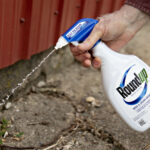State transportation officials are immune from a lawsuit filed by a brother of Gov. Mike Rounds over a fatal highway crash, the South Dakota Supreme Court says.
The court’s 3-2 decision said the 2004 accident was tragic but that sovereign immunity protects the Transportation Department officials responsible for traffic control signs at the fatal intersection 40 miles west of Pierre.
Three people died in the crash, including the unborn child of DeeAnn and Steve Rounds, the governor’s brother. Also killed were Patricia Truman, wife of one vehicle’s driver, and Sue Ann Giago, wife of the other vehicle’s driver.
Steve and DeeAnn Rounds and Monny Truman, husband of Patricia, sued the state, contending the intersection lacked adequate warning signs. They argued that installing warning signs at the intersection was required by state law, not a discretionary decision by Transportation Department officials.
Pierre Circuit Judge Lori Wilbur’s ruling that the state officials were immune from the lawsuit was appealed, and the divided state Supreme Court agreed with her.
Courts decisions have established that state officials are immune for discretionary actions so that they may set policies. But state employees taking routine action, so-called ministerial duties, may be sued.
The Supreme Court said the placement of warning signs was a discretionary action that required experts, not a routine action any citizen might be able to perform.
Chief Justice David Gilbertson wrote the majority opinion. He said the task of selecting appropriate places for warning signs isn’t a job for amateurs.
“It calls for a person with professional training to exercise professional discretion in the performance of his or her duties,” Gilbertson wrote. “The serious consequences of this accident are tragic. Yet, sovereign immunity precludes this action against these defendants.”
Justices Richard Sabers and Judith Meierhenry dissented.
Sabers said the case offered several issues of fact that should have been given to a jury to decide. He also said Gilbertson’s analysis missed the point.
“Incredibly, under the majority’s view, the Highway Department could arbitrarily, unreasonably and capriciously design the busiest, most dangerous intersection in South Dakota without stop signs or signage of any kind and never be accountable, despite numerous injuries and deaths year after year,” Sabers wrote.
The case should have been returned to circuit court for a jury trial, he said.
The accident happened at a Y-shaped intersection where three highways meet west of Pierre. Monny Truman was driving his wife, DeeAnn Rounds and the Rounds’ two children to Rapid City.
Truman had been driving a pickup west on U.S. Highway 14 and was at the end of a curve where that highway turns south toward Midland. Richard Giago was driving a minivan north on U.S. 14, and he continued north through the intersection on an arm of the Y that leads to a point where Highway 34 and Highway 63 continue west. Giago’s vehicle, as it continued north, entered the lane in which Truman was driving south, and the two vehicles collided nearly head-on.
Was this article valuable?
Here are more articles you may enjoy.

 Tesla, EEOC Plan Talks to Settle Factory Racism Suit
Tesla, EEOC Plan Talks to Settle Factory Racism Suit  Palantir Poaching Suit Called ‘Scare’ Tactic by Ex-Employees
Palantir Poaching Suit Called ‘Scare’ Tactic by Ex-Employees  Surging Oil Tanker Insurance Points to Growing Black Sea Chaos
Surging Oil Tanker Insurance Points to Growing Black Sea Chaos  Bayer Gets Supreme Court Hearing in Challenge to Roundup Suits
Bayer Gets Supreme Court Hearing in Challenge to Roundup Suits 